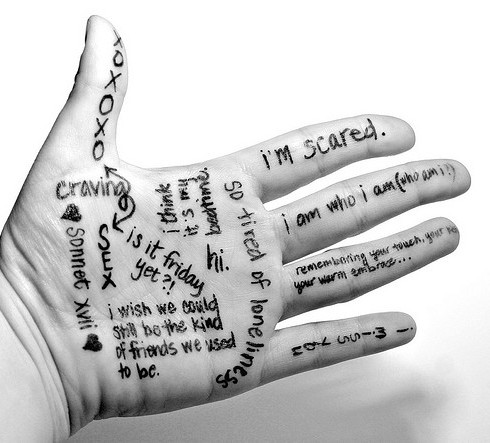The ego gets a really bad rap. Trapping us in straitjacket of projected desires, unfulfilled wishes and an unchecked, self-sustaining petulant sense of self-entitlement, it really does get in the way—a lot.
Yet, we need it to function.
The evolution of human consciousness and neuro-psychology thus far must yield some sense of identity, some delineation (if only to avoid the delusion of separation) to develop empathy through an awareness of others not being ‘us,’ and on a neurophysiological level to balance the function of each hemisphere of our brain.
The left: analytical, logical, time-sense oriented.
The right: spatial, interrelational, globally oriented.
One complements the other in synchrony—what is called neural integration. Thus our sense of ‘I’ is precariously hinged on the delicate balance of interplay between these complex functions of consciousness that form our early, and ongoing, narrative. This is what gives us our internal ‘map’ of the world, how we navigate perceived danger, are wired for optimism/pessimism, vulnerability, and carry with us our personalized set of principles and preferences to make our way through our world.
It is, in essence, what defines our world and gives us our very meaning structure.
So where does it all go wrong?
The precipice, the anticipation of intimate relationship is a good place of observation. Here, our otherwise undetected narrative operation (the ‘program’ of ‘me’) collides with an onslaught of stimulus and ‘meaning splits’ or self/other dichotomies.
me vs us,
safety vs abandon/surrender,
desire vs rationality,
predictability vs vulnerability,
impulse vs self-control
All swelling forth in a tsunami of excitation and pleasure hormones surging through our system, flooding our cortical structures and nervous system. It’s a wonder we function at all!
Fortunately, nature has devised clever adaptations to make it a relatively predictable process.
Excitation and lust, underscored by complex biochemical processes (sorting out pheromone and DNA matches in kissing, smelling, touching our potential mate, for example), give way to bonding and partnership. The downside of this elegant design is that our social-biological drives for partnership (bonding/love, security, survival) have an internal flaw—that which initially compels us to choose our partner is no longer available to us once we give over to monogamy.
In other words, we go from the drug of desire to the drug of bonding. Unfortunately, bonding doesn’t necessarily extinguish the evolutionary impulse to continue the cycle over and over. So how do we maintain this intricate balance between lust and love in the long-term?
Esther Perel’s work is enormously instructive in this area (Mating In Captivity), and I will pursue this question in future installments.
For now, the question remains how do we ‘go with the flow’ in the pre-commitment phase of dating?
How do we ‘obey’ the signals of desire and compatibility, feel a sense of careening into desire, while checking our own ego-projection (as compared to really seeing the object of our desire as who they are)? The impulse to rush in does not balance well with the caution of going slowly.
Here is where our core self-worth, our close friendships and family relationships, and our steadfastness to our own principles are critical.
Going slow is not easy.
Depending on our early childhood love attachments, and how we’ve adapted, it can be disastrous for our sense of well-being (as we equate it with lack of security or even our basic worthiness).
However, it’s good to experience the rise/fall of our own ego projection and expectations, idealization and fantasies early on in the dating process. It gives a sense of appreciating the person as they are, and what being in a relationship with them would be like realistically without the haze of infatuation, without the clamoring for security and completion of ‘me’ through union, without the myopic greed of entitlement.
Intimate love is a dance, a rhythm, a negotiation, an unfolding agreement that must continually be granted permission.
Love elephant and want to go steady?
Sign up for our (curated) daily and weekly newsletters!
Apprentice Editor: Lauryn DeGrado/Editor: Catherine Monkman
Photo: Dyanna Hyde/Flickr












Read 0 comments and reply